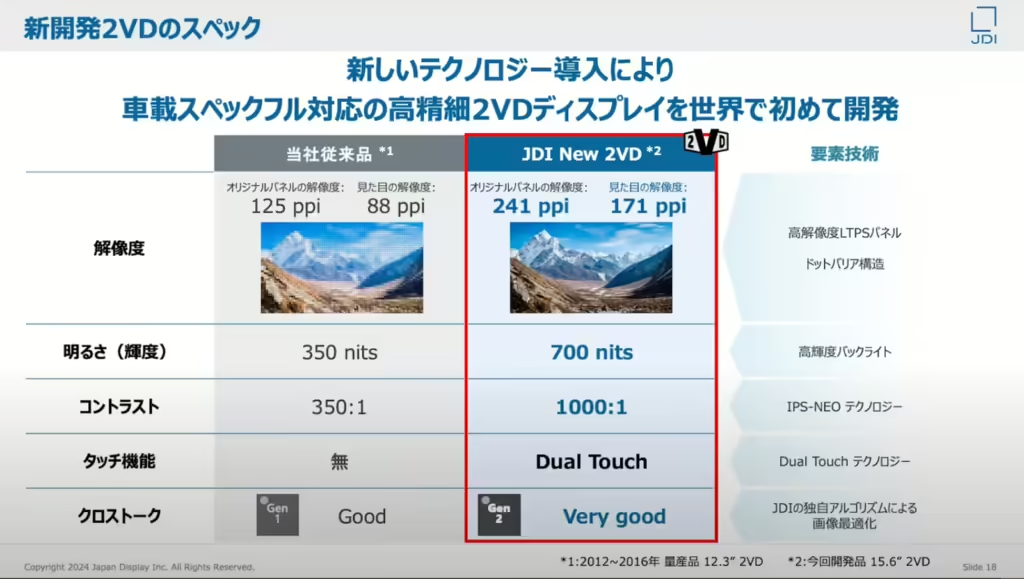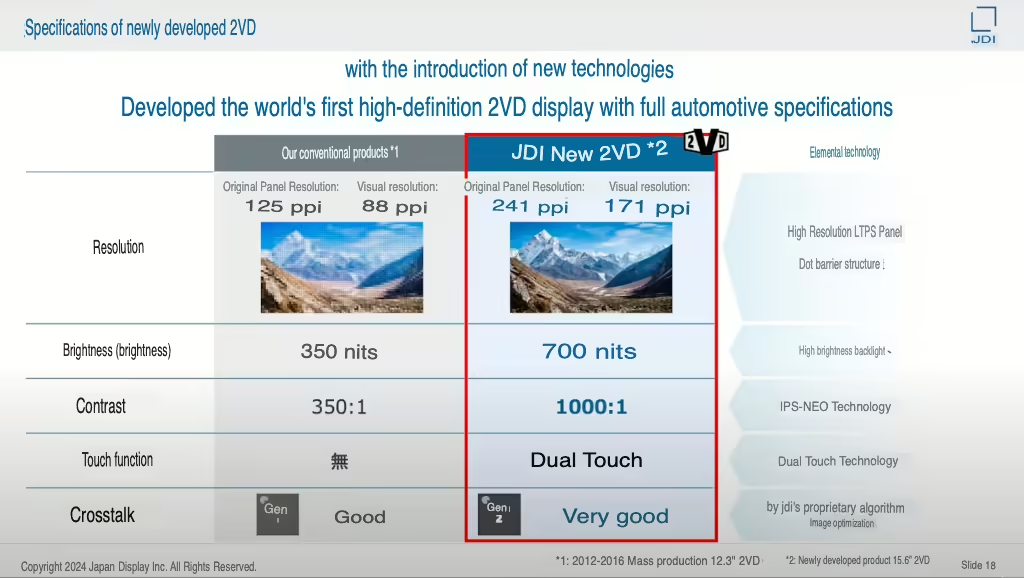JDI has done an intetrnational launch of its 2 Vision Display (2VD) display. This is a dual-screen technology that allows a single display to show different content to the driver and front-seat passenger simultaneously. At least that was the original concept version of the 2VD which showed limitations for its intended target audience in automotive. The new updated version of 2VD is being touted by JDI as the world’s first dual touch automotive grade display.

The new 2VD is supposed to maintain high-resolution output across both displays with a resolution increase from 88 ppi to 171 ppi, doubling. The brightness has also been increased from 350 nits to 700 nits, and the contrast ratio has been improved from 350:1 to 1000:1.
But where JDI sees the true value of the 2VD is its dual-touch technology. The display can distinguish between touch inputs from the driver and passenger. No chance of a passenger interfering with driver controls on the screen, apparently.
Crosstalk, a common issue where signals from two different displays interfere with each other, has also been drastically reduced. According to JDI, this advancement has moved the system from a “good” to an “excellent” rating in terms of crosstalk reduction. All of this is driven by a proprietary JDI image processing unit.


While the 2VD is designed primarily for automotive use, JDI sees broader applications for this technology. The company claims it is already in discussions with European and Chinese automotive manufacturers to integrate the 2VD into vehicles set to launch in 2025. Beyond cars, potential applications include public transportation, retail displays, security systems, and even digital signage. JDI has set an ambitious target for the 2VD, aiming for an annual revenue of 100 billion yen ($693 million) starting in 2025.
JDI is also looking ahead to the future by exploring the integration of their next-generation OLED technology, eLEAP, with the 2VD. The company estimates that adopting eLEAP could reduce CO2 emissions by up to 150,000 tons annually, wherever that number comes from.

